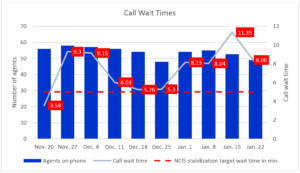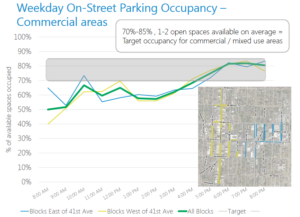Celebrating International Women’s Day; Report on SPU/SCL Call Center; Parking in the West Seattle Junction; Hate Crimes Audit Update
Celebrating International Women’s Day
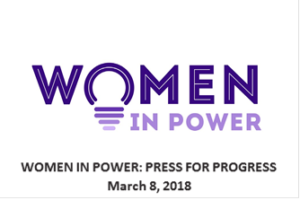 On Monday March 5th the Seattle City Council and Mayor Durkan signed a proclamation declaring Thursday March 8th, 2018 as International Women’s Day. The theme of this year’s International Women’s Day is Press for Progress. This year the Seattle City Council and Mayor Durkan celebrated International Women’s Day with a proclamation touting the many achievements women have brought to this vibrant city; noting the impact of the #metoo movement, discrimination faced by women of all backgrounds, and that the gender wage gap has yet to be overcome.
On Monday March 5th the Seattle City Council and Mayor Durkan signed a proclamation declaring Thursday March 8th, 2018 as International Women’s Day. The theme of this year’s International Women’s Day is Press for Progress. This year the Seattle City Council and Mayor Durkan celebrated International Women’s Day with a proclamation touting the many achievements women have brought to this vibrant city; noting the impact of the #metoo movement, discrimination faced by women of all backgrounds, and that the gender wage gap has yet to be overcome.
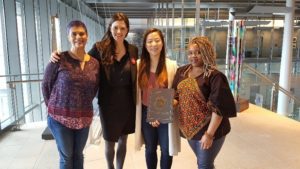 Members of the Seattle Women’s Commission came to Monday’s Full Council meeting to accept the proclamation and spoke about issues facing women in Seattle. In addition to presenting the proclamation on Monday I had the opportunity to be on a panel at the City’s Women in Power: Press for Progress event with my colleagues councilmember’s Gonzalez, Juarez and Mosqueda.
Members of the Seattle Women’s Commission came to Monday’s Full Council meeting to accept the proclamation and spoke about issues facing women in Seattle. In addition to presenting the proclamation on Monday I had the opportunity to be on a panel at the City’s Women in Power: Press for Progress event with my colleagues councilmember’s Gonzalez, Juarez and Mosqueda.
Report on SPU/SCL Call Center
I’ve heard from many of you about the Seattle Public Utilities (SPU) and Seattle City Light (SCL) call center wait times and service levels. I am tracking this issue closely, and my staff are working hard ensuring that individuals who contact my office get timely assistance. Ultimately we have to get to the root of the issues and solutions to those issues.
Early this year, because of the issues I’ve heard from so many of you, I included in my committee work plan review and monitoring the performance of the call center and coordinatization with SPU to resolve identified issues. I only have SPU, not SCL, in my Committee, I’m taking this up in my workplan even though the call center handles both SPU & SCL problems and the data shows that most of the problems relate to SCL billing issues. In late January I submitted several questions of SPU and in late February they provided answers to those questions, you can see the Q&A here.
The most common complaint that I hear is that the phone wait times are far too long, and often people give up waiting to be connected to a customer service representative. Below is a chart that shows the average call wait time, the number of customer service representatives available, and the current target wait time (the hope is to eventually reduce these targets too).
Many of you may be aware that the utilities switched to a new billing system at the end of 2016, called NCIS. Here is my last report about NCIS. While the new billing system, and accompanying learning curve, has contributed to some delays at the call center, there are other issue at play as well. Specifically, the report lists, among other things:
- Peak workload volumes in seasonal moves for residential customers, college students, and escrow transactions.
- Move transactions taking longer to process in the new billing system.
- Accuracy of SCL bills due to multiple, consecutive estimated meter readings.
- Delays in refunds, billing adjustments, and transfers.
- New billing system transition issues related to time needed to process certain transactions. The contact center’s average handle time per call has increased 27% (3 minutes) from that related to the previous billing system.
To help illustrate the magnitude of the work that the contact center receives on a weekly basis I asked for the calls received as well as emails, below you can see the graphs that represent each.
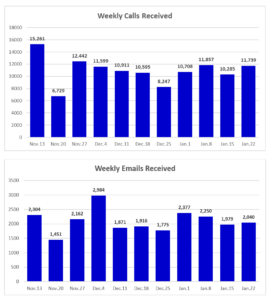 While the workload is not an excuse for the long wait times, it does help provide perspective.
While the workload is not an excuse for the long wait times, it does help provide perspective.
SPU has undertaken several steps to help correct the problem:
- Created an offline team to handle all the non-phone related customer requests which includes emails, escrow requests, correspondence, solid waste online service requests, and staffing customer service desk on SMT 4th floor.
- Changes were made to SPU’s website to improve the way customers send us emails to ensure that we receive all the necessary information to promptly respond to the customer’s issue.
- As a temporary change, the contact center hired 8 temporary Customer ServiceRepresentatives to exclusively handle Solid Waste calls and emails.
I will continue working with SPU to find ways and implement strategies to reduce the wait times and increase the efficiency of the contact center. If you have an issue with your utility bill, please don’t hesitate to reach out to me or Alex Clardy (alex.clardy@seattle.gov) in my office.
Parking in the West Seattle Junction
SDOT has completed a parking and access study in the West Seattle Junction.
SDOT found that in commercial areas, existing time limits are effective in creating parking turnover and availability. As such, they are not proposing paid parking. SDOT also found that off-street parking approaches capacity between 6 and 8 on weekdays, and noted that residential streets immediately around the Junction meet the basic qualifications for a new Restricted Parking Zone.
Weekday on-street parking occupancy in commercial areas was within the 70-85% range, or roughly 1-2 spaces available per block face. 70-85% occupancy is the target SDOT has established for on-street parking; rates above that can lead to a recommendation for paid parking.
SDOT also examined off-street parking occupancy, which also peaked in the 6-8 p.m. range on weekdays, and peaks during mid-day hours on Saturday.
Given that on-street parking occupancy is higher from 6-8 p.m., SDOT will consider extending time limits on and around California Avenue SW from 6 to 8 p.m.
Other next steps for SDOT include discussing a potential RPZ with JuNO at their April meeting, and considering time limits on commercial streets close to the Junction, and reviewing and adding load zones and at least one designated disabled space.
SDOT’s draft timeline notes additional outreach in commercial areas in April and May, release of a proposal for public comment (tentatively listed for July), toward a final plan in Fall, and implementation in winter of 2018-2019.
SDOT’s project website is updated and includes links to a presentation SDOT gave on February 28, and an access survey conducted for SDOT and transportation and parking patterns of people who visit the Junction.
Background on city parking policies is included here.
When SDOT announced the study, I requested that SDOT be sensitive to the unique nature of the Alaska Junction, and specifically include consideration of the extra capacity that the off-street parking contributes to the area in their study. They agreed, and included the presence of the free off-street parking in their study.
Hate Crimes Audit Update
In September the City Auditor published Phase 1 for their review of Review of Hate Crime Prevention, Response, and Reporting in Seattle.
One of the recommendations included in the report proposed “regional or statewide coordination of hate crime efforts to further the City’s impact of addressing these crimes,” and noted that SPD, SOCR, and SPU agree with all the recommendations.
It further noted “The City of Seattle could encourage a regional approach to responding to hate crimes by supporting a statewide agency or task force.”
The report noted the Community Relations Service from the NW Regional Office of the Department of Justice was willing to facilitate meetings to begin this conversation, and I indicated my office could represent the City as a co-convener.
Meetings of a planning group have begun. Next steps include creating stronger connections within Seattle with Seattle-area organizations and institutions to build a strong network that could then be expanded regionally.
Posted: March 9th, 2018 under Civil Rights, Councilmember Herbold, LGBTQ, Police Department, Proclamations, Seattle Public Utliities, Transportation
Tags: call center, City Light, hate crimes, International Women's Day, parking, Seattle Public Utilities, West Seattle Junction


